WAR GRAVE
HEINRICH CONZE (grave 5)
FELDWEBEL
7 STAFFEL OF NACHTJAGDGESCHWADER 5
ABOUT MY LIFE
Born: 19th January 1920
Died: 4th March 1945
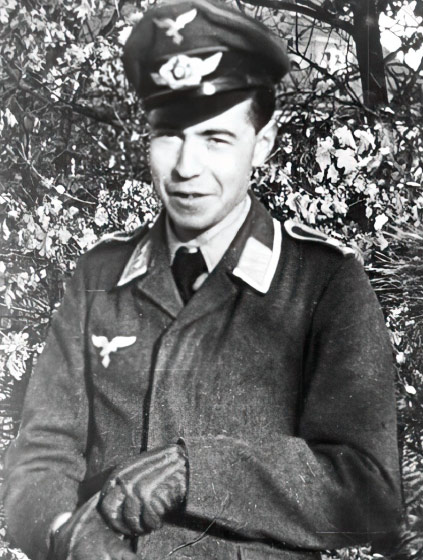
I was born in Essen Germany and I was 25 years old, I died just a few weeks before the end of World War 2, just a matter of days from surviving the conflict. In the Luftwaffe, I held the rank of Feldwebel, which is equivalent to the British rank of Sergeant.
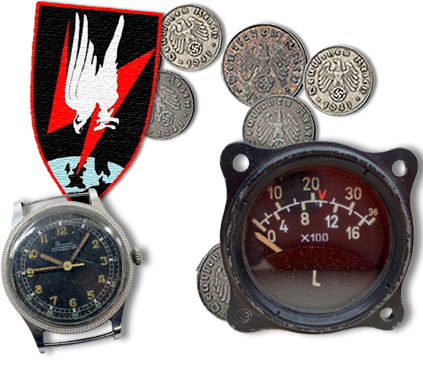
MY AIRCRAFT
I was flying the Junkers JU88G-6, a potent night-fighter aircraft equipped with radar to help me and my crew detect the target. The aircraft carried a crew of 4, a pilot, two radar operators and a gunner. On the fuselage, we carried the identification code C9 + RR.
The aircraft was powered by two Jumo 213a V12 engines. This made the aircraft fast, with a top speed of over 330 mph, a maximum height of around 30,000ft and a range of just under 1400 miles.
The armament consisted of 6 MG151/20 Cannon and a rear facing machine gun.
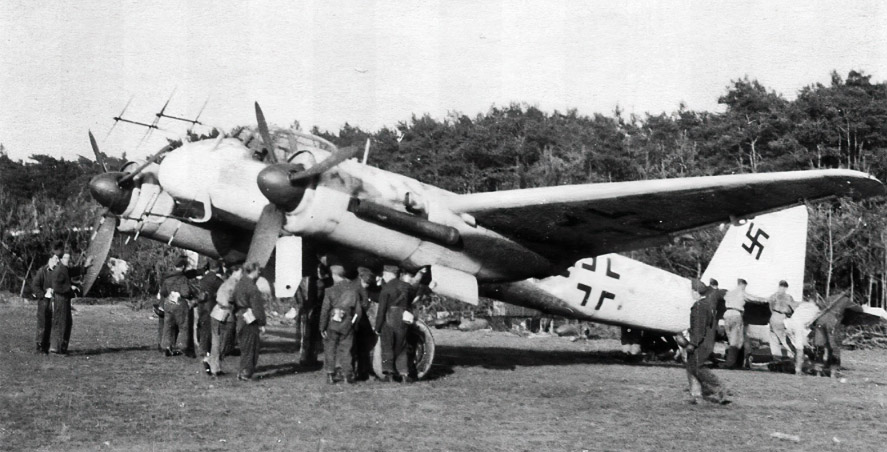
MY ROLE
I was the pilot of this aircraft and as such, also the captain.
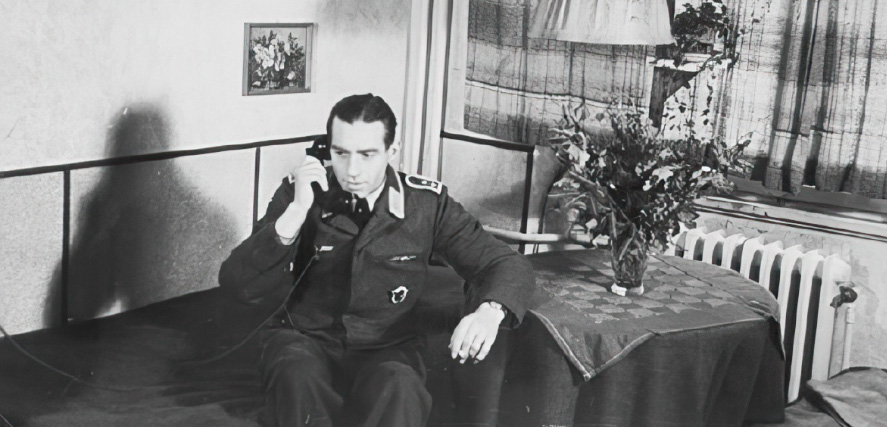
Heinrich Conze in his quarters at his home base.
MY SQUADRON
I was in 7 Staffel of Nachtjagdgeschwader 5, which is roughly equivalent to 7 Squadron of the Fifth Night Fighter wing in RAF terms. The unit was based at Lubeck/Blankensee in Germany.
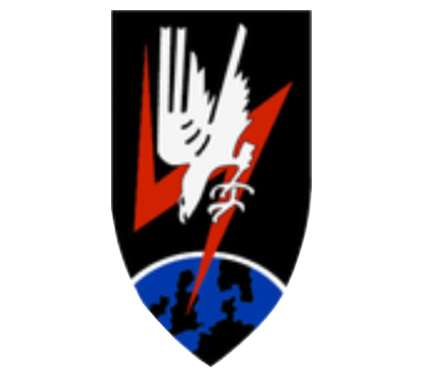
7 Staffel of Nachtjagdgeschwader 5
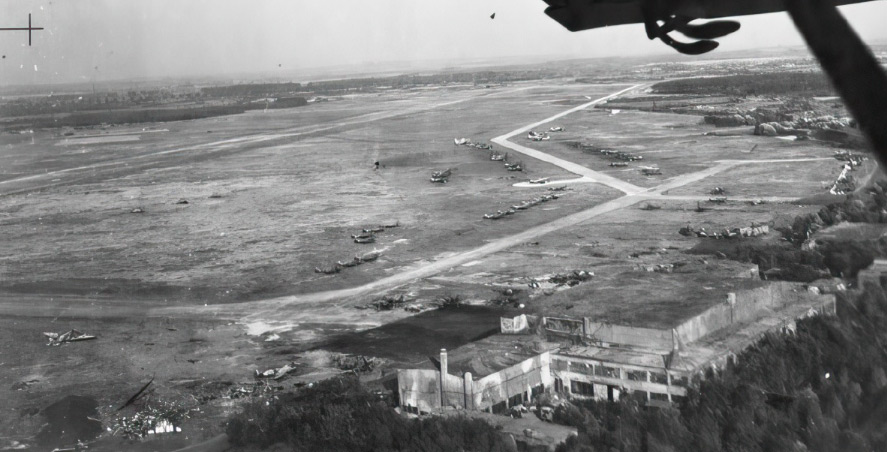
Lubeck/Blankensee airfield.
THE ACCIDENT
The war was nearly over and defeat for Germany was certain, the Americans had crossed the Rhine and the Russians were closing in on Berlin; we didn’t know it then, but in just 2 months time, Nazi Germany would surrender to the Allies. Never-the-less, we were ordered on a special mission to England – Operation Gisela.
The idea was simple, instead of attacking the British bombers over Germany, we would follow them back to England. As they prepared to land, they would be complacent, their gunners would relax their look-out and the pilots would turn on their landing lights. All of these things would make them much easier targets for us.
After we crossed the English coast, we found our first target at around 01:30hrs. We shot down Lancaster NG502 from RAF Binbrook over Langworth in Lincolnshire. Eyewitnesses on the ground saw us shooting at the aircraft and then flying off at low-level at Scothern.
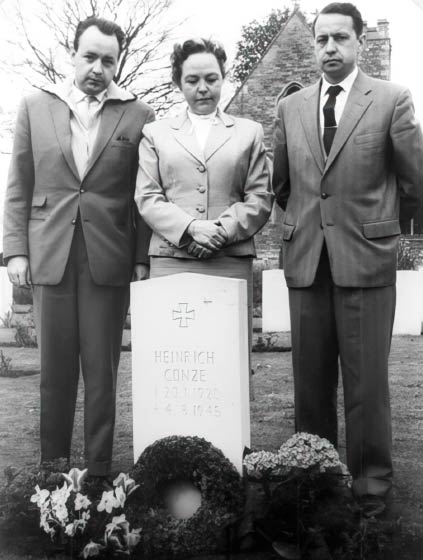
Heinrich Conze’s family visit his grave after the war.
Seconds later, we engaged moving lights on the ground, opening fire with our cannons to devastating effect. However, we misjudged our attack and collided with what turned out to be a car on the road. The destruction was complete and instantaneous, all aboard our aircraft were killed instantly, as was the driver of the car, Jack Kelway.
At this late stage of the war, blackout restrictions had been relaxed and car headlights may have been brighter than the enemy pilots were used to. This could have led them to believe they were aircraft landing lights. It would seem possible that in the dark, both pilots mistook the car lights for an aircraft landing at the airfield. The fact that car lights are much closer together than a bombers might lead the pilot to believe that he was higher than in fact he was. This could explain why they flew such a dangerous mission only to attack two targets of no real military value.
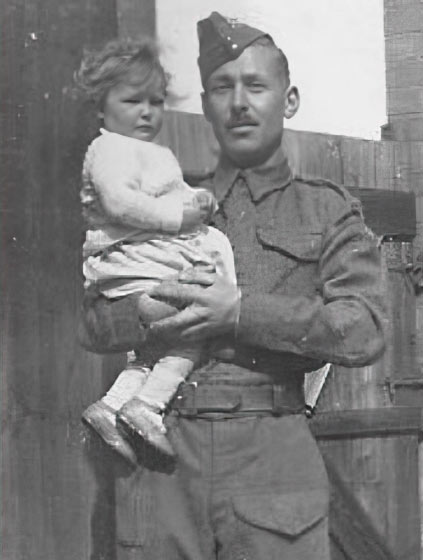
Jack Kelway was a well-known and popular figure in Lincoln. He was a Shift Superintendent at a local Sugar Beet factory and had served as a Special Constable for many years. In the Royal Observer Corps, he was a particularly conscientious and enthusiastic member. When going on duty at Hackthorn, his usual practice was to drive there early and sleep at the post prior to his shift. On the night of his death he had broken from this routine and planned to arrive and go straight on duty, this in turn caused him to be in the wrong place at very much the wrong time.
In addition to his ROC duties, he also devoted time to teaching aircraft recognition at the local Air Training Corps Squadron at North Hykeham. His devotion to his duties was reflected in the number of local dignitaries that attended his funeral on the 7th of March. Inspector J C Ilman represented A Division of the Lincoln Special Constabulary, Observer Commander R R Poole the ROC, Mr J H Cargill represented his employers and the Lady Mayoress attended on behalf of the Mayor. Many of his colleagues at the Sugar Beet factory were also present; four of them were the coffin bearers. After the burial in Newport Cemetery, Lincoln, members of the Royal Observer Corps and Air Training Corps filed in pairs to the graveside and saluted their dead comrade. Observer Kelway holds the dubious distinction of being the only member of the Royal Observer Corps killed on active duty whilst on home soil.
Jack was married with a daughter and two young sons.
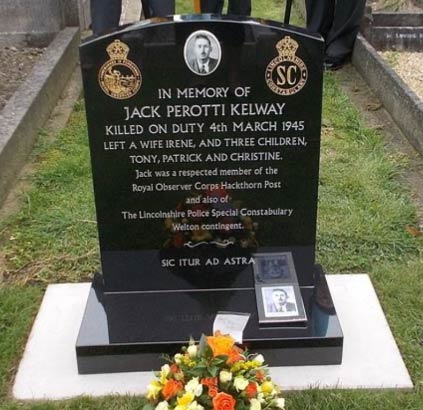
Where Next
Visit Jack Kelway’s grave, Newport Cemetery, St John’s Road, Newport, Lincoln. LN1 3DP
ON THIS DAY IN WORLD WAR TWO – 4th MARCH 1945
Helsinki Declares war on Germany.
Germany is so desperate for soldiers, they begin to enlist schoolboys.
